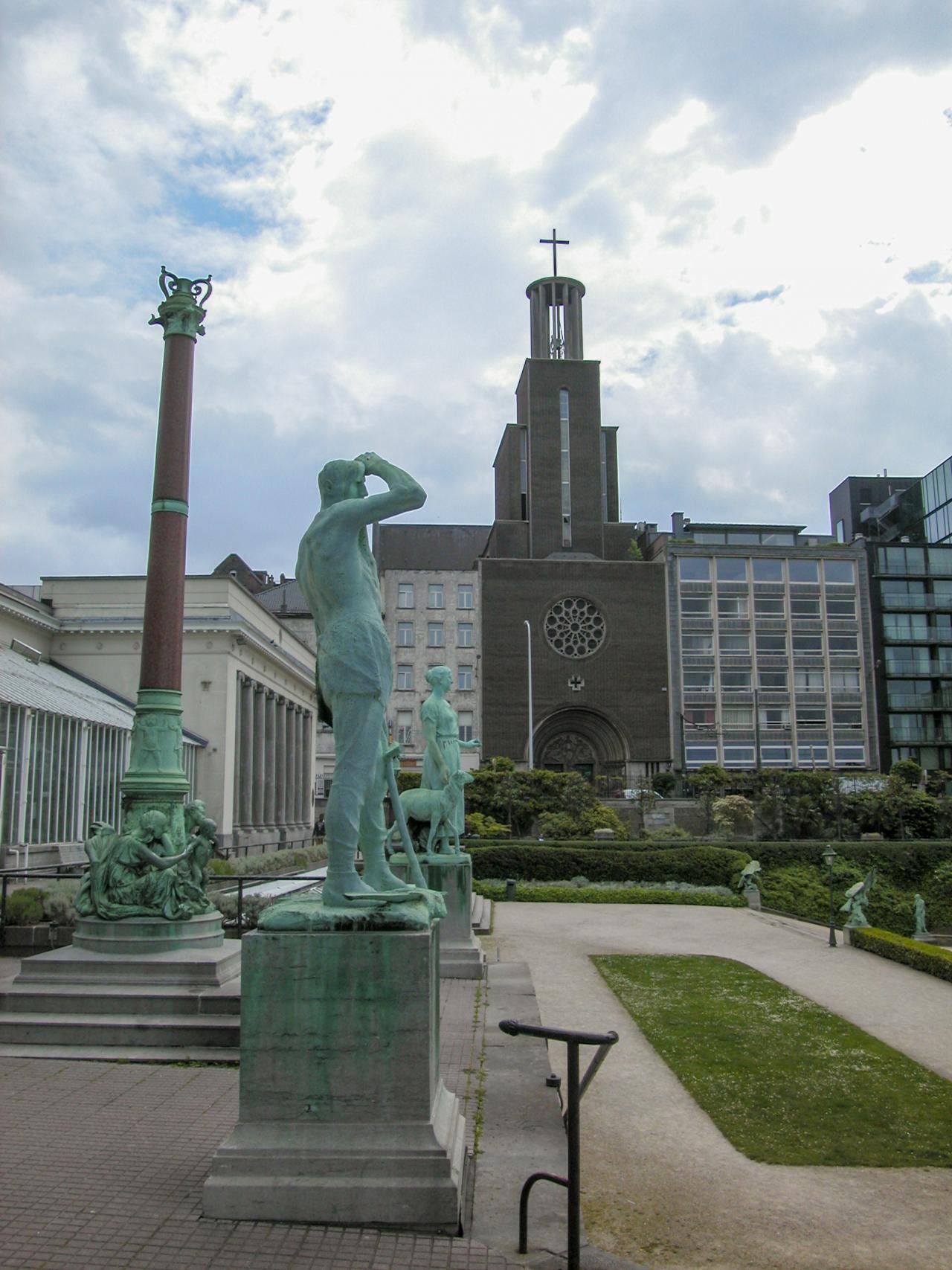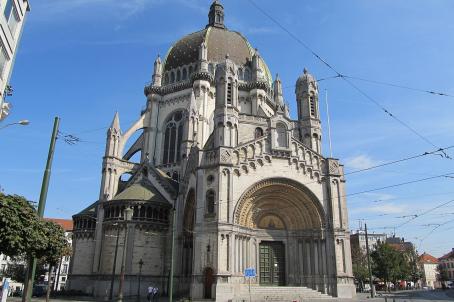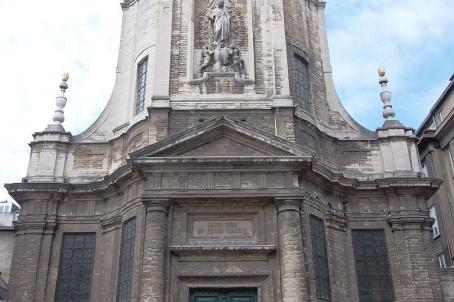Church of Gesu
The church of the Gesu was built in the 19th century and is now desacralized. From 1860 to 1865, Louis Pavot built a neo-gothic church for the neighbouring Jesuit community. Between 1937 and 1939, the church was enlarged with a façade on rue Royale, as the neo-gothic church is no longer visible from the street. The new brick façade was designed by the architect Antoine Courtens with a bell tower in a distinctly Art Deco style, while the entrance portal, with a wide arch, a tympanum and statues of the twelve apostles and surmounted by a rose window, retains a soberly traditional style.






